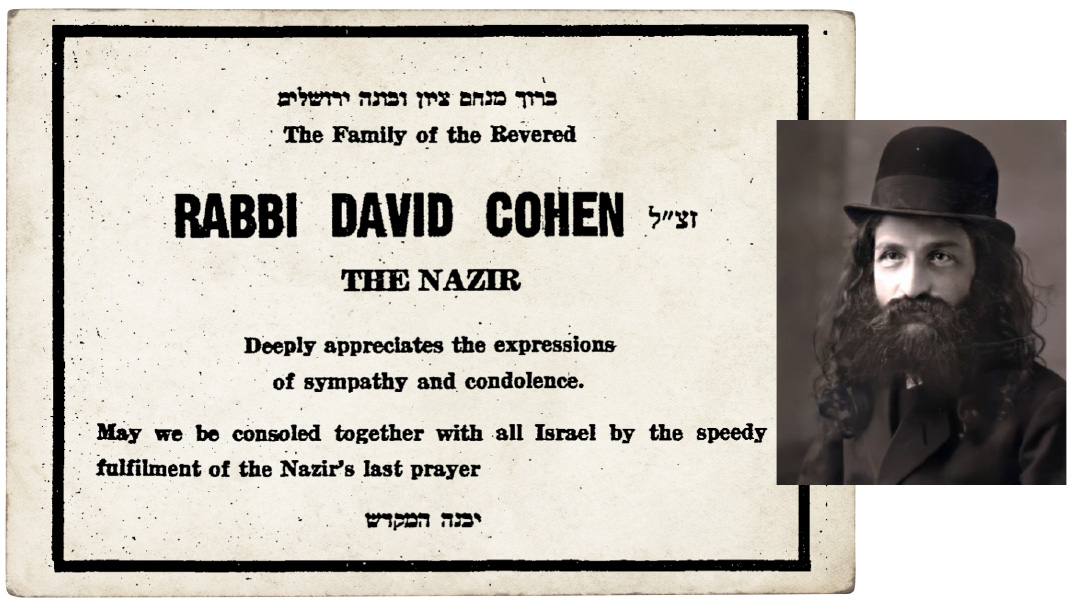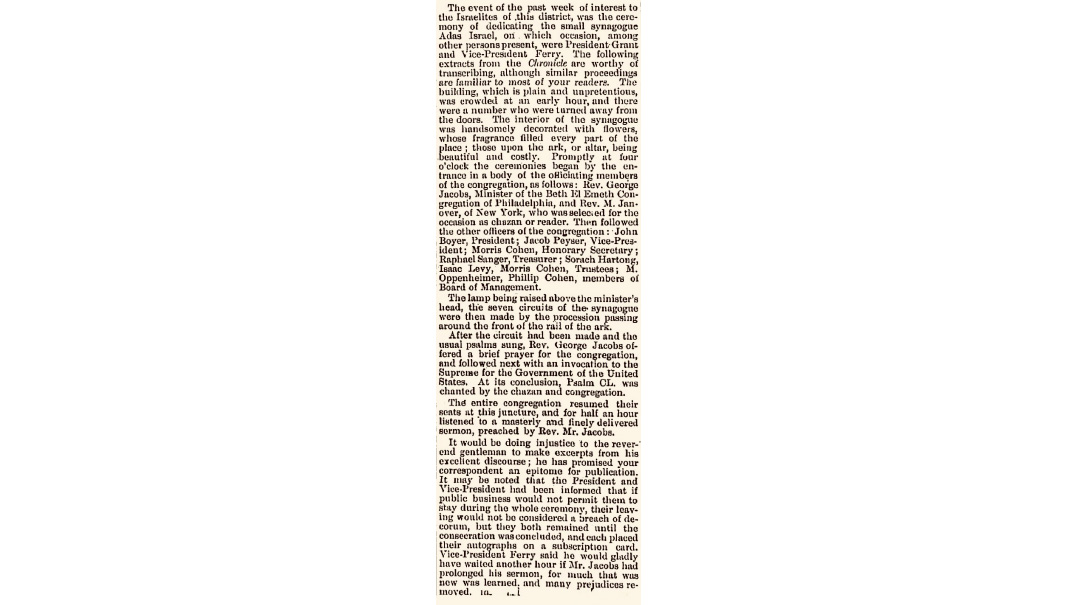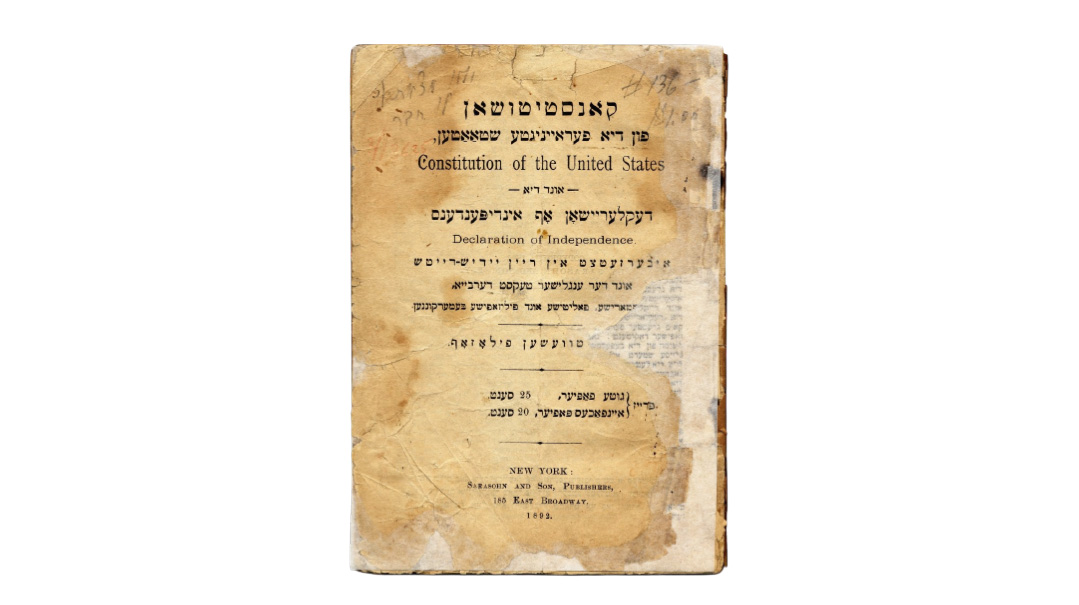The Rav Hanazir
| January 31, 2023“I didn’t realize that live mekubalim still walked the streets of Yerushalayim until I encountered the Nazir”

Title: The Rav Hanazir
Location: Yerushalayim
Document: Jerusalem Post
Time: 1972
Having grown up into a Lithuanian rabbinic family, Rav David Cohen (1887–1972), later known as the “Rav Hanazir,” studied in the great yeshivos of Volozhin, Radin, and Slabodka. While in Radin, he enjoyed a close relationship with the Chofetz Chaim. When a young David Cohen decided to go study at the University of Freiburg in Germany, he went to take leave of the Chofetz Chaim, who imparted some sage advice.
“Very soon, Mashiach will arrive, and rabbis — especially those who are Kohanim — will need to be proficient in the intricate halachos of Kodashim. It’s incumbent upon you to study these laws in depth in order to be competent to render halachic decisions in this area when the time arrives. Promise me that you’ll study one page of Kodashim every day while you’re in Germany. That practice should bring you merit in your endeavors.”
Not only did young Rav Cohen keep his promise, he delivered regular Gemara shiurim during his time in Freiburg as well.
His restless soul found solace in a dramatic meeting with his fellow Kohein, Rav Avraham Yitzchak Kook, in St. Gallen, Switzerland, where he had been stranded due to the outbreak of World War I in 1914. Rav Cohen later adopted the practices of nezirus by not cutting his hair or drinking wine, and would come to be known as “the Nazir.” Immigrating to Palestine in 1921, he assumed further ascetic practices, such as vegetarianism; long silences on Shabbos, on Yom Tov, and from Rosh Chodesh Elul until after Yom Kippur; and wanderings in the Judean Hills, in anticipation of achieving a level of prophecy.
Serving as a longtime maggid shiur in Yeshivah Merkaz Harav, he also edited Rav Kook’s multivolume Oros Hakodesh. In addition, he’d deliver various other shiurim in his home on Rechov Amos in Geula, where he resided in the same building as Rav Dovid Soloveitchik. One of the attendees of his Hoshana Rabbah shiur was his old friend Zalman Shazar, who by then had retired as president of the State of Israel, who described the surreal experience:
I was privileged to participate in his Zohar shiur in his succah on the night of Hoshana Rabbah during the last several years of his life.… At around midnight, the violin would be played, and we’d dance together in a big circle. I held his hand, as we had been close in our youth, and as we danced together, it seemed like he was in another world.
A nazir is required to abstain from wine or grape products, refrain from cutting his hair, and take care not to come into contact with tumas meis. As a Kohein, the Nazir was careful regarding tumah regardless. But the spectacle of the long-haired rabbi in the streets of Yerushalayim led a prominent resident to comment, “I didn’t realize that live mekubalim still walked the streets of Yerushalayim until I encountered the Nazir.”
For mitzvos normally performed over a glass of wine, such as Kiddush, Havdalah, and the Four Cups at the Seder, the Nazir would substitute apple cider.
The Nazir’s Son
Rav She’ar Yashuv Cohen (1927–2016) served as the chief rabbi of Haifa for 36 years. Although his father wished for him to continue in his path as a nazir, Rav She’ar Yashuv took his first haircut when he was 16 years old. He did continue to refrain from wine, however, as well as maintain a vegetarian diet. During the 1948 War of Independence, he was captured by the Jordanians while defending the Old City of Yerushalayim, and spent several months in captivity at the Umm el-Jimal (Mother of Camels) POW camp near the city of Mafraq in Jordan. Rav She’ar Yashuv was married to Dr. Naomi Goldstein, daughter of America’s renowned Rabbi Herbert Goldstein, and granddaughter of the famed philanthropist Harry Fischel. The Nazir’s daughter Tzofiah was married to Israel’s Chief Rabbi Shlomo Goren.
The Canceled Knessiah
The Nazir’s transformational encounter with Rav Kook in Switzerland came about in the unlikeliest of ways. In the summer of 1914, Rav Kook, then chief rabbi of Jaffa, traveled with his wife to Germany to attend the inaugural Knessiah Gedolah of Agudath Israel, which was to be held at the end of August in Frankfurt. When World War I broke out in early August, the Knessiah was postponed (it was ultimately held in Vienna in 1923). Delegates with Russian citizenship fled or faced deportation. Biographer Simcha Raz relates another memorable encounter that Rav Kook had during that stay in Europe, soon after the outbreak of war:
On a tram in Berlin, the Kooks met and befriended a younger and very impressive rabbinic scholar from Lithuania, Rav Yechiel Yaakov Weinberg. On hearing of the younger man’s difficult financial straits, Rav Kook turned to his wife, who held their wallet, and asked her to give most of their money away, over the young man’s protests. People knew the Kooks and would take care of them, the rabbi assured him; and although the young scholar would also be famous one day, he was as yet unknown and should not go hungry.
For more on the life of the Rav HaNazir, listen to the recent episode of Jewish History Soundbites with Yehuda Geberer released last week in conjunction with All Daf in honor of Daf Yomi commencing Maseches Nazir.
(Originally featured in Mishpacha, Issue 947)
Oops! We could not locate your form.







